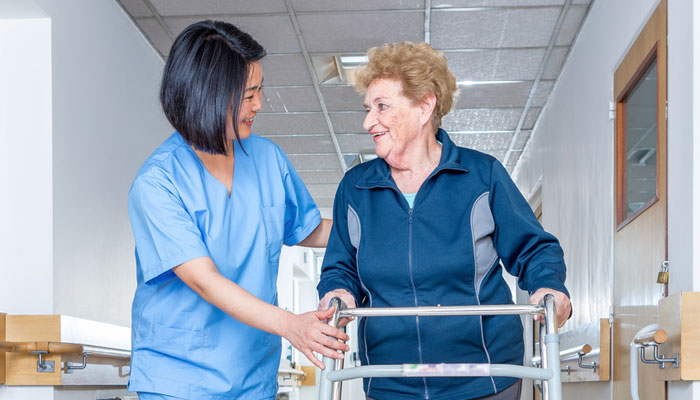
“The bed is not your friend.” This is the overall message concerning the benefits of walking when hospitalized. In one study, patients who walked frequently were able to go home an average of 36 hours earlier than those who did not walk very much.
After staying in bed for just two days, an older adult begins to lose muscle mass. In addition to losing strength, staying in bed puts older adults at greater risk for blood clots, bedsores, and confusion. They also become less able to take care of themselves. Some are then forced to live in a nursing home. Others may simply end up back in the hospital sooner.
Walking at least four times a day is a good goal. Attempt a slightly longer, more vigorous walk each time.
Here are things you can do to promote walking:
- Ask the nurse for approval to help your loved one walk. This way your relative doesn’t have to wait for a nurse to be free.
- Bring eyeglasses and hearing aids. Better vision and hearing will reduce the chance of a fall—a big concern for hospital staff.
- Ask if your relative can wear clothes and shoes from home. Wearing regular clothes during the day sets the mental stage for being more active—and healthy.
- Ask for physical therapy if your loved one seems weak or unsteady. This extra layer of support can help get him or her back up and at ’em.
Of course there may be good reasons to stay in bed. The first few hours after surgery, for instance. Or a broken pelvis. But once your loved one has been cleared for assisted walking, do what you can to help him or her take a spin around the hallway every three hours or so.

